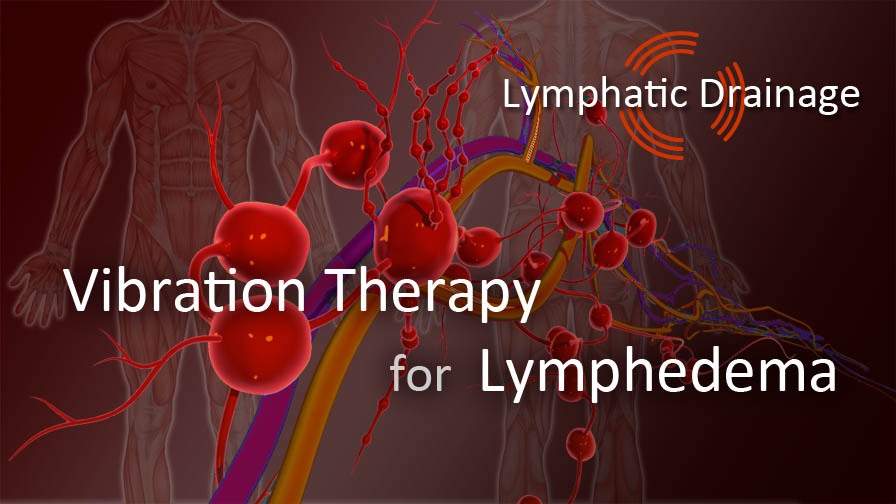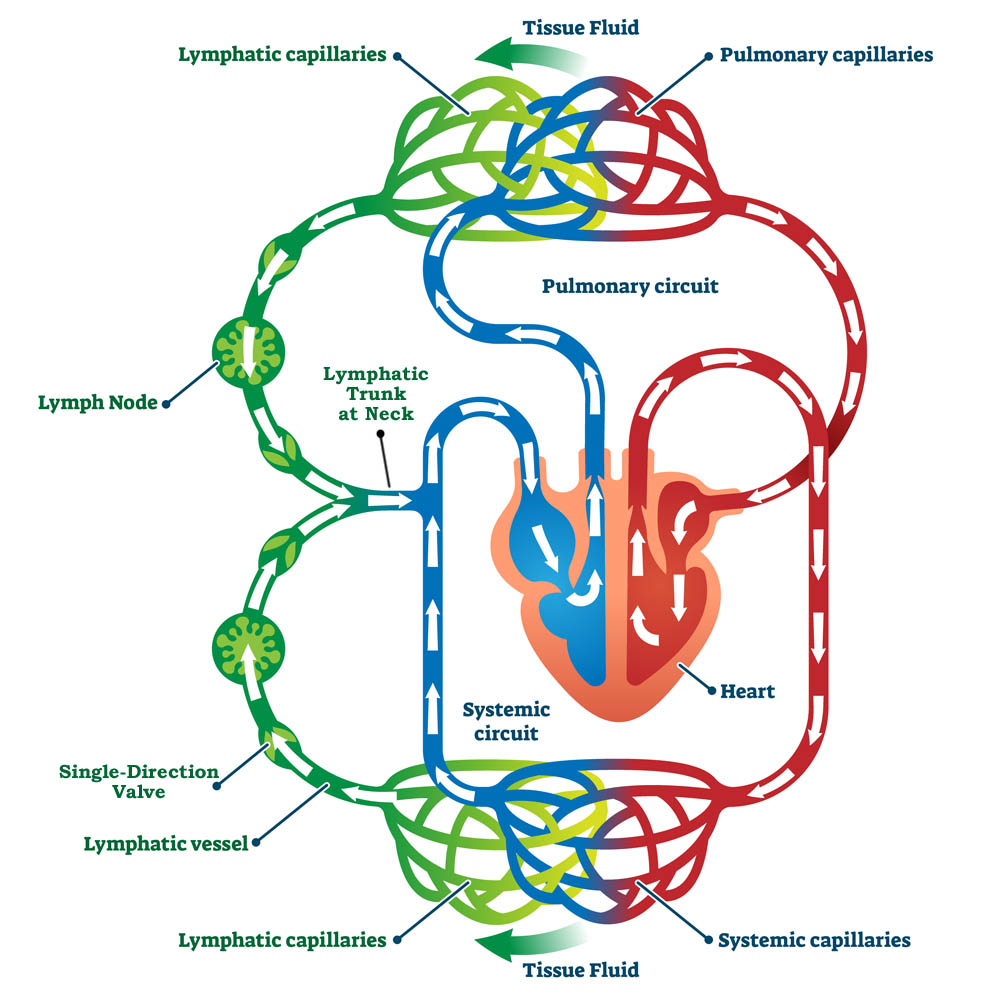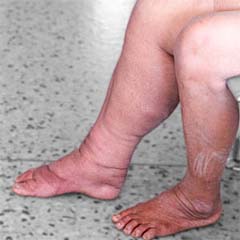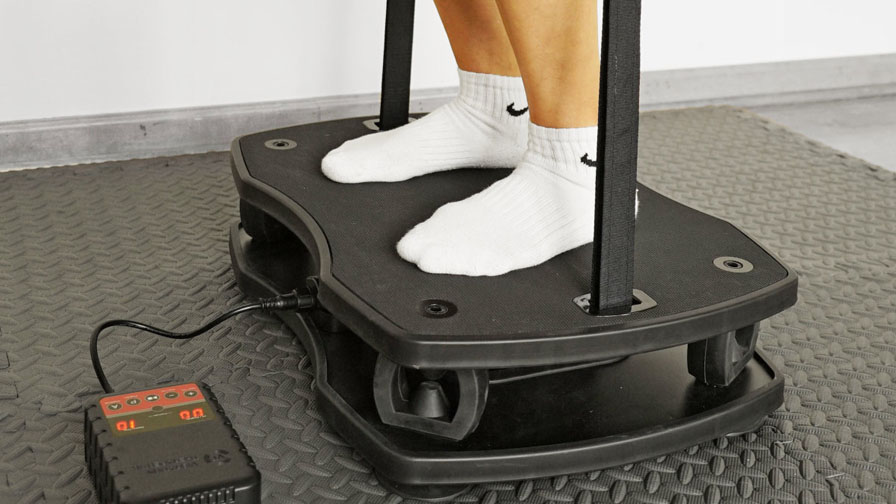
How Does Vibration Therapy Help Lymphedema?
Vibration therapy is well recognized for its effectiveness in treating lymphedema. The rapidly repeated muscle contraction induced by vibration works perfectly with the mechanism of lymphatic system. Vibration therapy is a natural and practical solution for facilitating lymphatic drainage.
People with leg lymphedema can experience immediate relief from vibration therapy.
Vibration therapy is an innovative and fundamental solution for lymphedema. While traditional compression therapy and massage can only offer temporary relief from lymphedema, vibration therapy provides a fundamental solution for lymphedema by improving muscle conditions and microcirculation.
- What Drive Lymph Flow?
- What is Lymphatic drainage?
- What is Lymphedema?
- How Does Vibration Therapy Facilitate Lymphatic Drainage?
- Vibration Exercise for Treating Lymphedema
What Drive Lymph Flow?
Unlike the cardiovascular system, which has the heart to pump and circulate blood, the lymphatic system primarily relies on the contraction of lymph vessels (internal drive) and the contraction of surrounding muscles (external drive) to propel the flow of lymph.
| Internal Drive |
The wall of the lymph vessel is mainly composed of a layer of smooth muscles that contract involuntarily at a certain pace. The contraction pressure propels the flow of lymph. |
| External Drive | The lymphatic system also relies on the movement of the surrounding tissues to squeeze lymph vessels from the outside, facilitating the flow of lymph in its direction. Skeletal muscle contractions, breathing, arterial pulsations, and other bodily activities all contribute to assisting lymph movement. |
The required fluid pressure and flow rate for the lymphatic system are low. By incorporating moderate physical activities into our daily routine, we can obtain sufficient external drive to supplement the internal drive, promoting well-functional lymph circulation.
However, if our lymphatic system is impaired, we will require more external drive to assist lymph circulation. Vibration therapy can serve this purpose effectively.
What is Lymphatic Drainage?
Lymphatic drainage is an important function of the lymphatic system. It is the process of draining the tissue fluid carrying metabolic waste to the lymphatic system and, after filtration through lymph nodes, discharging the fluid into the bloodstream.
The lymphatic system employs a single-direction valve mechanism that maintains the flow of lymph from lymphatic capillaries in tissues to lymph nodes, then to lymphatic trunks at the neck, and ultimately to the veins.

What Is Lymphedema?

If the lymphatic system cannot effectively drain the metabolic-waste-carrying tissue fluid from tissues, the trapped fluid can cause tissue swelling and more serious health problems. This medical condition is called lymphedema.
Lack of physical activity, certain medical conditions, and medications can undermine the functionality of the lymphatic system and cause lymphedema.
Lymphedema most commonly occurs in the arms and legs. Once developed, it is challenging to treat. Early intervention and consistent management are essential.
How Does Vibration Therapy Improve Lymphatic Drainage?
Skeletal muscle contraction plays an important role in facilitating lymph flow. Lymph vessels are closely intertwined with skeletal muscles, and muscle contraction creates external pressure on lymph vessels, assisting in lymph flow.
Vibration can induce involuntary, rapidly repeated skeletal muscle contractions due to the skeletal muscle's natural stretch reflex response.

The rapidly repeated skeletal muscle contractions create fast-paced pumping strokes on the adjacent lymph vessels. This dynamic pressure effectively boosts tissue fluid exchange in lymph capillaries, promotes lymph flow in vessels, and facilitates lymphatic drainage. This is called skeletal muscle pump effect.
In addition, the physiological process of muscle contraction involves the influx and release of interstitial fluid in and out of muscle cells. This process also promotes lymph circulation.
Vibration therapy aligns well with the natural mechanism of the lymphatic system. It serves as a natural and fundamental solution for improving lymphatic drainage and treating lymphedema.
Lymphedema often occurs in the legs and feet. A high-frequency whole-body vibration plate can effectively work on the legs and feet. Users may observe improvements in lymphatic drainage within a few days of use.
Vibration Exercise for Treating Lymphedema
Tiptoe and calf-raise are two effective exercise poses to use on a linear vibration plate for treating lymphedema.
A vibration frequency range from 30 Hz to 35 Hz is recommended because within this range, we can achieve the best skeletal muscle contraction experience, thanks to the muscle's resonance and damping effect.
Beginners should start with a lower frequency and gradually progress to the desired frequency range.
Multiple short exercise sessions throughout the day are recommended. This allows muscles to rest and recover, gradually improving their conditions and their microcirculation environment.
Be patient, persistent and observant!
Reference:
- Understanding of Lymph Circulation
- By Olivier STÜCKER, Catherine PONS-HIMBERT, and Elisabeth LAEMMEL Université Paris
- Lymphedema - Symptoms, Causes, and Treatment
- By Mayor Clinic
- Jay Tang
- About
-
Interpreting life science from an engineering perspective.
Featured Posts:
